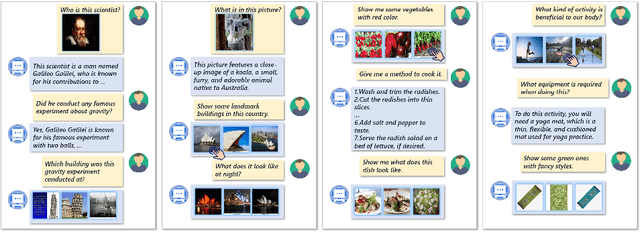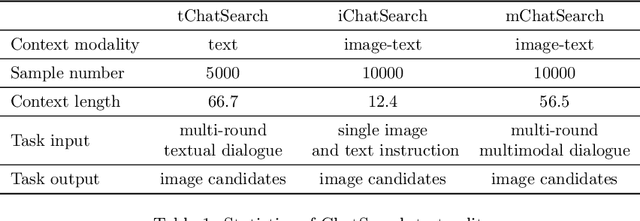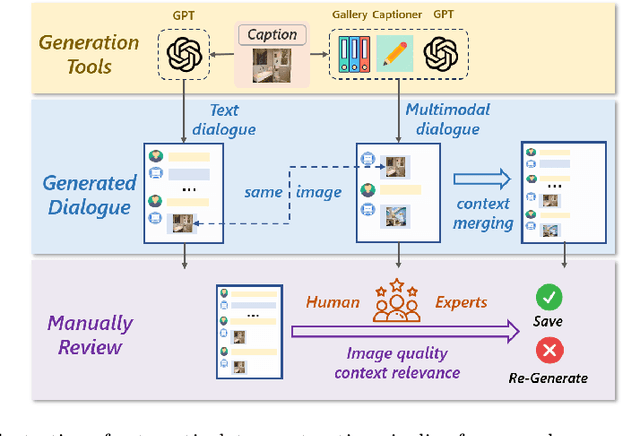Shuai Shao
Hunyuan-Game: Industrial-grade Intelligent Game Creation Model
May 20, 2025Abstract:Intelligent game creation represents a transformative advancement in game development, utilizing generative artificial intelligence to dynamically generate and enhance game content. Despite notable progress in generative models, the comprehensive synthesis of high-quality game assets, including both images and videos, remains a challenging frontier. To create high-fidelity game content that simultaneously aligns with player preferences and significantly boosts designer efficiency, we present Hunyuan-Game, an innovative project designed to revolutionize intelligent game production. Hunyuan-Game encompasses two primary branches: image generation and video generation. The image generation component is built upon a vast dataset comprising billions of game images, leading to the development of a group of customized image generation models tailored for game scenarios: (1) General Text-to-Image Generation. (2) Game Visual Effects Generation, involving text-to-effect and reference image-based game visual effect generation. (3) Transparent Image Generation for characters, scenes, and game visual effects. (4) Game Character Generation based on sketches, black-and-white images, and white models. The video generation component is built upon a comprehensive dataset of millions of game and anime videos, leading to the development of five core algorithmic models, each targeting critical pain points in game development and having robust adaptation to diverse game video scenarios: (1) Image-to-Video Generation. (2) 360 A/T Pose Avatar Video Synthesis. (3) Dynamic Illustration Generation. (4) Generative Video Super-Resolution. (5) Interactive Game Video Generation. These image and video generation models not only exhibit high-level aesthetic expression but also deeply integrate domain-specific knowledge, establishing a systematic understanding of diverse game and anime art styles.
AgentNet: Decentralized Evolutionary Coordination for LLM-based Multi-Agent Systems
Apr 01, 2025Abstract:The rapid advancement of Large Language Models (LLMs) has catalyzed the development of multi-agent systems, where multiple LLM-based agents collaborate to solve complex tasks. However, existing systems predominantly rely on centralized coordination, which introduces scalability bottlenecks, limits adaptability, and creates single points of failure. Additionally, concerns over privacy and proprietary knowledge sharing hinder cross-organizational collaboration, leading to siloed expertise. To address these challenges, we propose AgentNet, a decentralized, Retrieval-Augmented Generation (RAG)-based framework that enables LLM-based agents to autonomously evolve their capabilities and collaborate efficiently in a Directed Acyclic Graph (DAG)-structured network. Unlike traditional multi-agent systems that depend on static role assignments or centralized control, AgentNet allows agents to specialize dynamically, adjust their connectivity, and route tasks without relying on predefined workflows. AgentNet's core design is built upon several key innovations: (1) Fully Decentralized Paradigm: Removing the central orchestrator, allowing agents to coordinate and specialize autonomously, fostering fault tolerance and emergent collective intelligence. (2) Dynamically Evolving Graph Topology: Real-time adaptation of agent connections based on task demands, ensuring scalability and resilience.(3) Adaptive Learning for Expertise Refinement: A retrieval-based memory system that enables agents to continuously update and refine their specialized skills. By eliminating centralized control, AgentNet enhances fault tolerance, promotes scalable specialization, and enables privacy-preserving collaboration across organizations. Through decentralized coordination and minimal data exchange, agents can leverage diverse knowledge sources while safeguarding sensitive information.
SymGPT: Auditing Smart Contracts via Combining Symbolic Execution with Large Language Models
Feb 12, 2025Abstract:To govern smart contracts running on Ethereum, multiple Ethereum Request for Comment (ERC) standards have been developed, each having a set of rules to guide the behaviors of smart contracts. Violating the ERC rules could cause serious security issues and financial loss, signifying the importance of verifying smart contracts follow ERCs. Today's practices of such verification are to manually audit each single contract, use expert-developed program-analysis tools, or use large language models (LLMs), all of which are far from effective in identifying ERC rule violations. This paper introduces SymGPT, a tool that combines the natural language understanding of large language models (LLMs) with the formal guarantees of symbolic execution to automatically verify smart contracts' compliance with ERC rules. To develop SymGPT, we conduct an empirical study of 132 ERC rules from three widely used ERC standards, examining their content, security implications, and natural language descriptions. Based on this study, we design SymGPT by first instructing an LLM to translate ERC rules into a defined EBNF grammar. We then synthesize constraints from the formalized rules to represent scenarios where violations may occur and use symbolic execution to detect them. Our evaluation shows that SymGPT identifies 5,783 ERC rule violations in 4,000 real-world contracts, including 1,375 violations with clear attack paths for stealing financial assets, demonstrating its effectiveness. Furthermore, SymGPT outperforms six automated techniques and a security-expert auditing service, underscoring its superiority over current smart contract analysis methods.
Preference Discerning with LLM-Enhanced Generative Retrieval
Dec 11, 2024



Abstract:Sequential recommendation systems aim to provide personalized recommendations for users based on their interaction history. To achieve this, they often incorporate auxiliary information, such as textual descriptions of items and auxiliary tasks, like predicting user preferences and intent. Despite numerous efforts to enhance these models, they still suffer from limited personalization. To address this issue, we propose a new paradigm, which we term preference discerning. In preference dscerning, we explicitly condition a generative sequential recommendation system on user preferences within its context. To this end, we generate user preferences using Large Language Models (LLMs) based on user reviews and item-specific data. To evaluate preference discerning capabilities of sequential recommendation systems, we introduce a novel benchmark that provides a holistic evaluation across various scenarios, including preference steering and sentiment following. We assess current state-of-the-art methods using our benchmark and show that they struggle to accurately discern user preferences. Therefore, we propose a new method named Mender ($\textbf{M}$ultimodal Prefer$\textbf{en}$ce $\textbf{d}$iscern$\textbf{er}$), which improves upon existing methods and achieves state-of-the-art performance on our benchmark. Our results show that Mender can be effectively guided by human preferences even though they have not been observed during training, paving the way toward more personalized sequential recommendation systems. We will open-source the code and benchmarks upon publication.
Unifying Generative and Dense Retrieval for Sequential Recommendation
Nov 27, 2024Abstract:Sequential dense retrieval models utilize advanced sequence learning techniques to compute item and user representations, which are then used to rank relevant items for a user through inner product computation between the user and all item representations. However, this approach requires storing a unique representation for each item, resulting in significant memory requirements as the number of items grow. In contrast, the recently proposed generative retrieval paradigm offers a promising alternative by directly predicting item indices using a generative model trained on semantic IDs that encapsulate items' semantic information. Despite its potential for large-scale applications, a comprehensive comparison between generative retrieval and sequential dense retrieval under fair conditions is still lacking, leaving open questions regarding performance, and computation trade-offs. To address this, we compare these two approaches under controlled conditions on academic benchmarks and propose LIGER (LeveragIng dense retrieval for GEnerative Retrieval), a hybrid model that combines the strengths of these two widely used methods. LIGER integrates sequential dense retrieval into generative retrieval, mitigating performance differences and enhancing cold-start item recommendation in the datasets evaluated. This hybrid approach provides insights into the trade-offs between these approaches and demonstrates improvements in efficiency and effectiveness for recommendation systems in small-scale benchmarks.
ChatSearch: a Dataset and a Generative Retrieval Model for General Conversational Image Retrieval
Oct 24, 2024



Abstract:In this paper, we investigate the task of general conversational image retrieval on open-domain images. The objective is to search for images based on interactive conversations between humans and computers. To advance this task, we curate a dataset called ChatSearch. This dataset includes a multi-round multimodal conversational context query for each target image, thereby requiring the retrieval system to find the accurate image from database. Simultaneously, we propose a generative retrieval model named ChatSearcher, which is trained end-to-end to accept/produce interleaved image-text inputs/outputs. ChatSearcher exhibits strong capability in reasoning with multimodal context and can leverage world knowledge to yield visual retrieval results. It demonstrates superior performance on the ChatSearch dataset and also achieves competitive results on other image retrieval tasks and visual conversation tasks. We anticipate that this work will inspire further research on interactive multimodal retrieval systems. Our dataset will be available at https://github.com/joez17/ChatSearch.
Luna: An Evaluation Foundation Model to Catch Language Model Hallucinations with High Accuracy and Low Cost
Jun 03, 2024Abstract:Retriever Augmented Generation (RAG) systems have become pivotal in enhancing the capabilities of language models by incorporating external knowledge retrieval mechanisms. However, a significant challenge in deploying these systems in industry applications is the detection and mitigation of hallucinations: instances where the model generates information that is not grounded in the retrieved context. Addressing this issue is crucial for ensuring the reliability and accuracy of responses generated by large language models (LLMs) in diverse industry settings. Current hallucination detection techniques fail to deliver accuracy, low latency, and low cost simultaneously. We introduce Luna: a DeBERTA-large (440M) encoder, finetuned for hallucination detection in RAG settings. We demonstrate that Luna outperforms GPT-3.5 and commercial evaluation frameworks on the hallucination detection task, with 97% and 96% reduction in cost and latency, respectively. Luna is lightweight and generalizes across multiple industry verticals and out-of-domain data, making it an ideal candidate for industry LLM applications.
AuditGPT: Auditing Smart Contracts with ChatGPT
Apr 05, 2024Abstract:To govern smart contracts running on Ethereum, multiple Ethereum Request for Comment (ERC) standards have been developed, each containing a set of rules to guide the behaviors of smart contracts. Violating the ERC rules could cause serious security issues and financial loss, signifying the importance of verifying smart contracts follow ERCs. Today's practices of such verification are to either manually audit each single contract or use expert-developed, limited-scope program-analysis tools, both of which are far from being effective in identifying ERC rule violations. This paper presents a tool named AuditGPT that leverages large language models (LLMs) to automatically and comprehensively verify ERC rules against smart contracts. To build AuditGPT, we first conduct an empirical study on 222 ERC rules specified in four popular ERCs to understand their content, their security impacts, their specification in natural language, and their implementation in Solidity. Guided by the study, we construct AuditGPT by separating the large, complex auditing process into small, manageable tasks and design prompts specialized for each ERC rule type to enhance LLMs' auditing performance. In the evaluation, AuditGPT successfully pinpoints 418 ERC rule violations and only reports 18 false positives, showcasing its effectiveness and accuracy. Moreover, AuditGPT beats an auditing service provided by security experts in effectiveness, accuracy, and cost, demonstrating its advancement over state-of-the-art smart-contract auditing practices.
Utilizing Computer Vision for Continuous Monitoring of Vaccine Side Effects in Experimental Mice
Apr 03, 2024Abstract:The demand for improved efficiency and accuracy in vaccine safety assessments is increasing. Here, we explore the application of computer vision technologies to automate the monitoring of experimental mice for potential side effects after vaccine administration. Traditional observation methods are labor-intensive and lack the capability for continuous monitoring. By deploying a computer vision system, our research aims to improve the efficiency and accuracy of vaccine safety assessments. The methodology involves training machine learning models on annotated video data of mice behaviors pre- and post-vaccination. Preliminary results indicate that computer vision effectively identify subtle changes, signaling possible side effects. Therefore, our approach has the potential to significantly enhance the monitoring process in vaccine trials in animals, providing a practical solution to the limitations of human observation.
EVE: Efficient Vision-Language Pre-training with Masked Prediction and Modality-Aware MoE
Aug 23, 2023



Abstract:Building scalable vision-language models to learn from diverse, multimodal data remains an open challenge. In this paper, we introduce an Efficient Vision-languagE foundation model, namely EVE, which is one unified multimodal Transformer pre-trained solely by one unified pre-training task. Specifically, EVE encodes both vision and language within a shared Transformer network integrated with modality-aware sparse Mixture-of-Experts (MoE) modules, which capture modality-specific information by selectively switching to different experts. To unify pre-training tasks of vision and language, EVE performs masked signal modeling on image-text pairs to reconstruct masked signals, i.e., image pixels and text tokens, given visible signals. This simple yet effective pre-training objective accelerates training by 3.5x compared to the model pre-trained with Image-Text Contrastive and Image-Text Matching losses. Owing to the combination of the unified architecture and pre-training task, EVE is easy to scale up, enabling better downstream performance with fewer resources and faster training speed. Despite its simplicity, EVE achieves state-of-the-art performance on various vision-language downstream tasks, including visual question answering, visual reasoning, and image-text retrieval.
 Add to Chrome
Add to Chrome Add to Firefox
Add to Firefox Add to Edge
Add to Edge